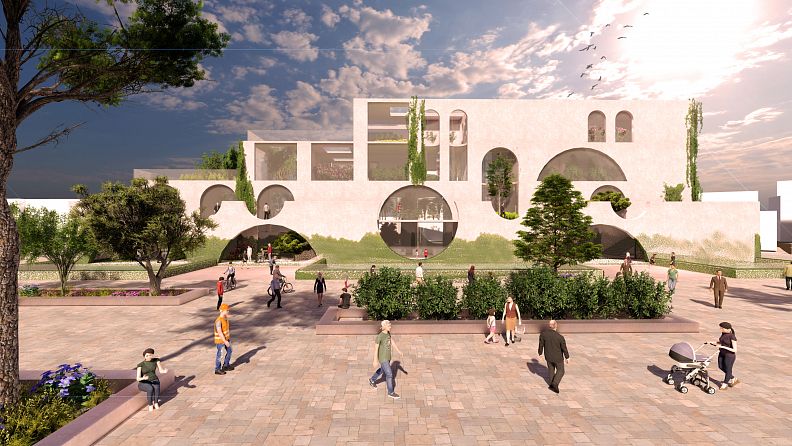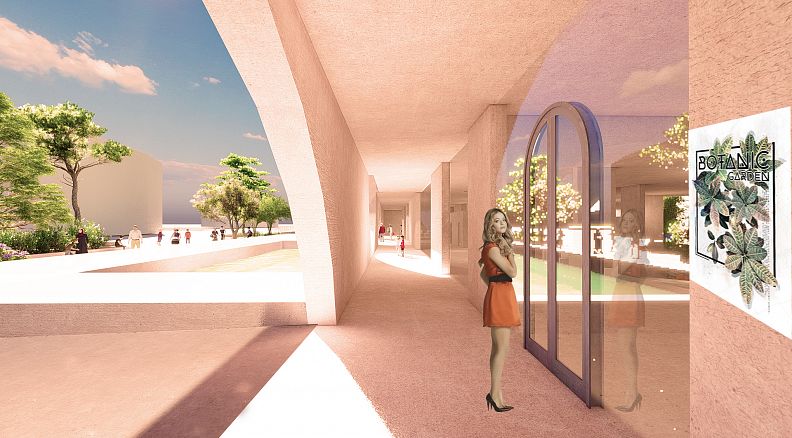Phenomenology in Architecture - Museum with Exhibition Gallery and Botanical Garden, Pristina

Project idea
Healing Through Architecture
This project addresses the problem of developing public spaces that serve the physical and spiritual well-being of a community and people in general, implementing the principles of Phenomenology in Architecture to develop impressive spaces of experience - museums and galleries - and connecting people between themselves and with the ecologically shaped environment - the botanical garden.
By studying the phenomenon of space as one of the only things in common between architecture and science, it is possible to explore its influence on the human mind and body.
Since our thoughts and feelings vary depending on the place and time, we have taken an universal example of the beauty that the mind seeks in space, borrowed from nature and turned into architecture.
How we can create architecture that harbors , protects from nature and preserves connections with it, and how different spaces affect our minds, have been treated in this project.
Pristina , respectively the dense area near the old core of the city, remains with potential and higher demands for spaces that would reconsolidate the daily life of residents with cultural and ecological spaces, which would also continue the existing cultural infrastructure with new attractions for both locals and tourists.
Finally, the goal remains the creation of recreational, meditative and healing spaces, which give more than the primary - utilitarian function.
Project description
Phenomenology demonstrated in architecture is the manipulation of space, material, and light and shadow to create a memorable encounter through an impact on the human senses. This theory promotes the integration of sensory perception as a function of a built form.
The idea of a botanical garden is closely related to the effect that nature has on humans, an effect which I wanted to include in this project. In addition to the botanical garden, there is also a part of the botanical museum and gallery.
The space of a botanical garden would evoke enough feelings for all kinds of people. Considering the fact that in addition to looking at the plants and they make you feel closer to nature, you can also touch and smell them.
The botanical garden as a function in this project touches almost all the senses that human have. Sight, hearing, smell, touch. But there’s more when it comes to human senses.
Mind, body and soul have a very important impact on this project.
Technical information
Building' characteristics - The use of Arches,
as structures with deep resonance
The idea for this facade goes beyond aesthetics. I wanted to influence the psychology of the observer starting with a little confusion in the first row of arches.
At first they look like inverted arches when the person looks at the building as they pass by it. However, at a moment when you stands directly in front of the building, the inverted arches in the first row (gallery around the building) coincide with the arches of the second row, thus forming complete circles.
People get deeper into their thoughts as they walk , hence they need a distraction like this archery game to get their attention and perhaps persuade them to come in for a visit.
If a distraction like this one only from the outside would work and the visitor decides to spend time in the building , the narrative on the inside of the building would also play its part and so the visitor would forget for at least a few hours about the stuff in everyday life .
Project location: Pristina, Kosovo
Year: 2021
Software used: ArchiCad , Lumion , Adobe Photoshop


























